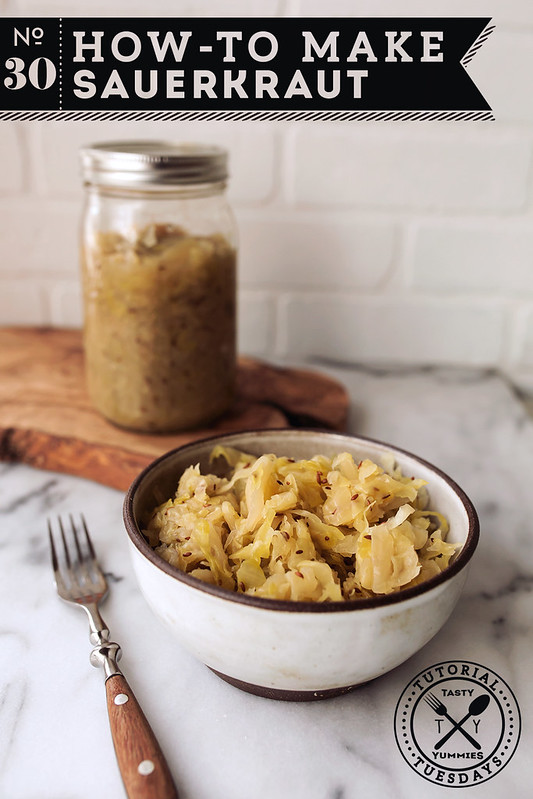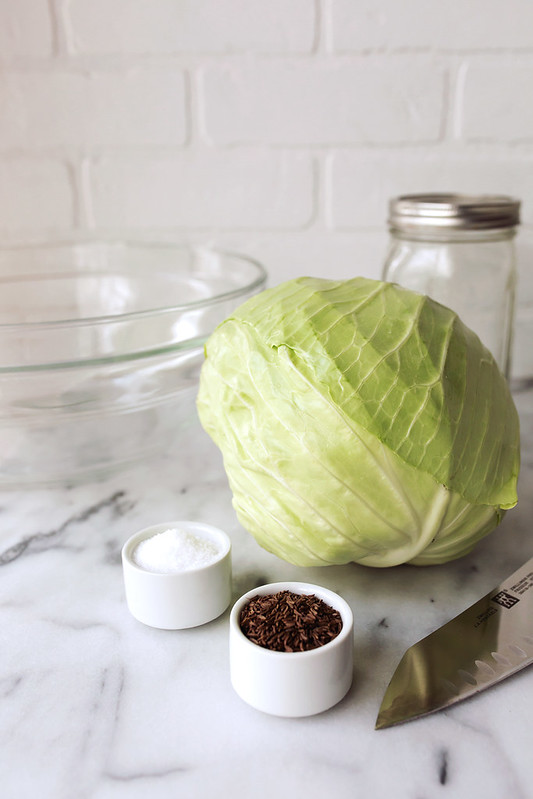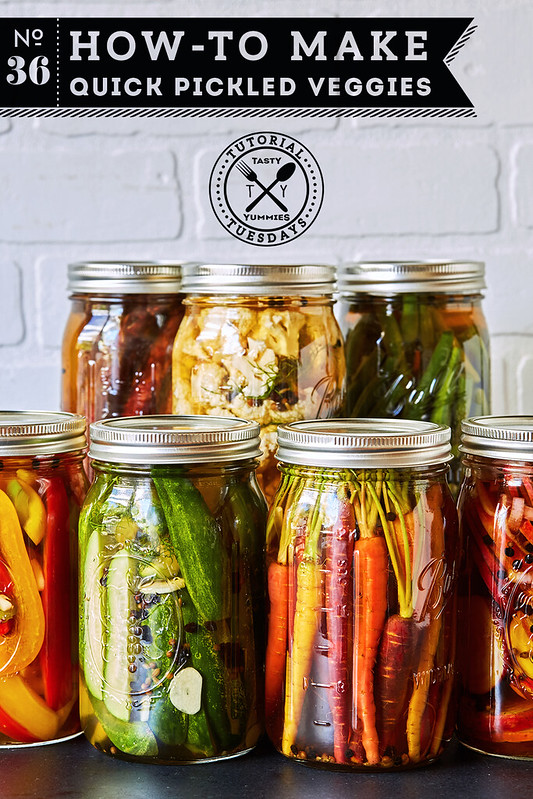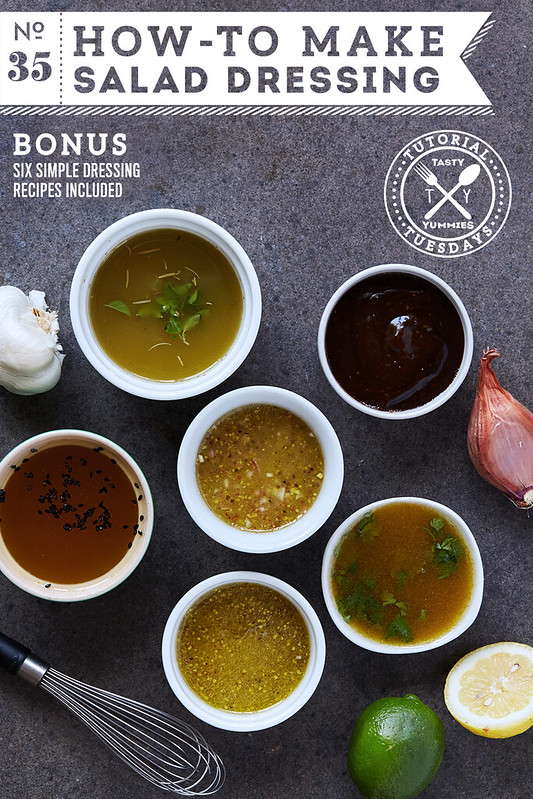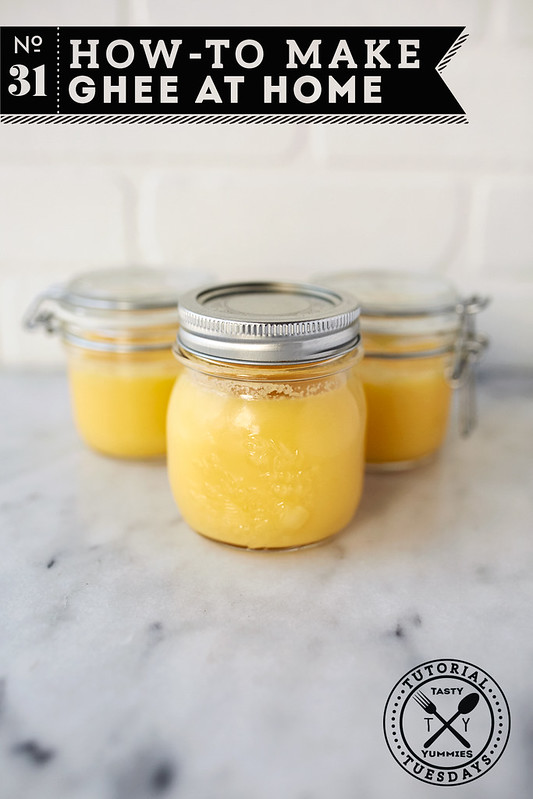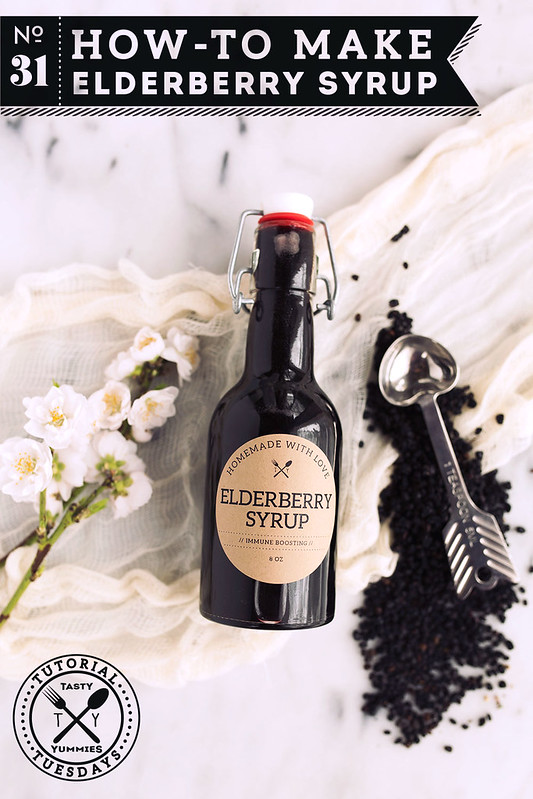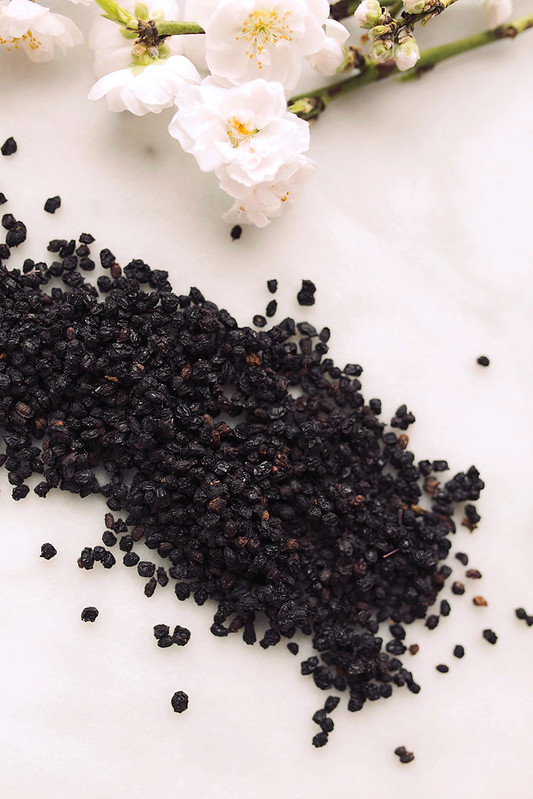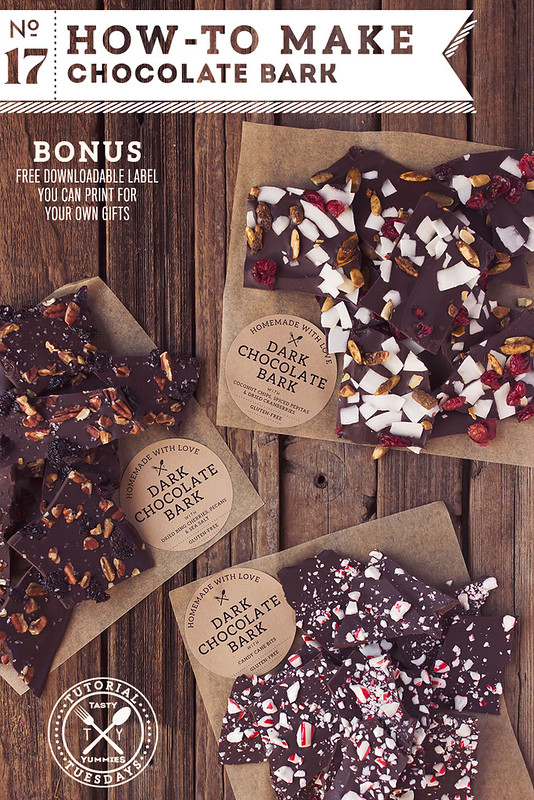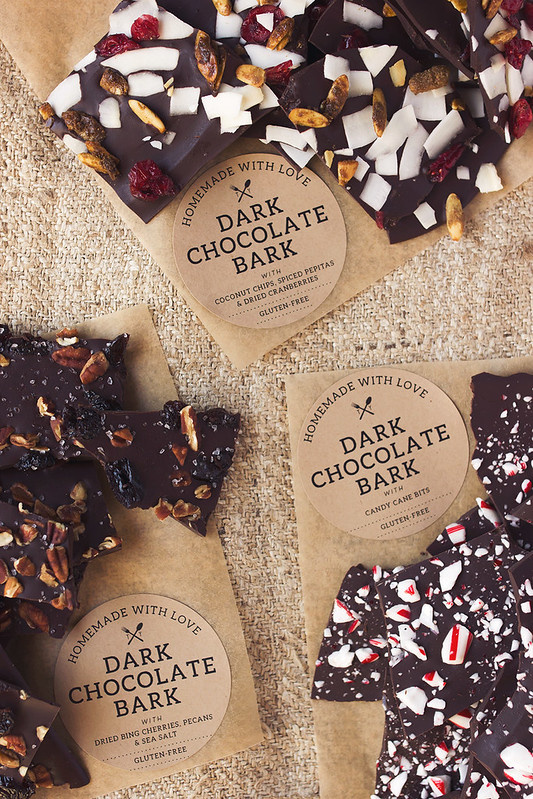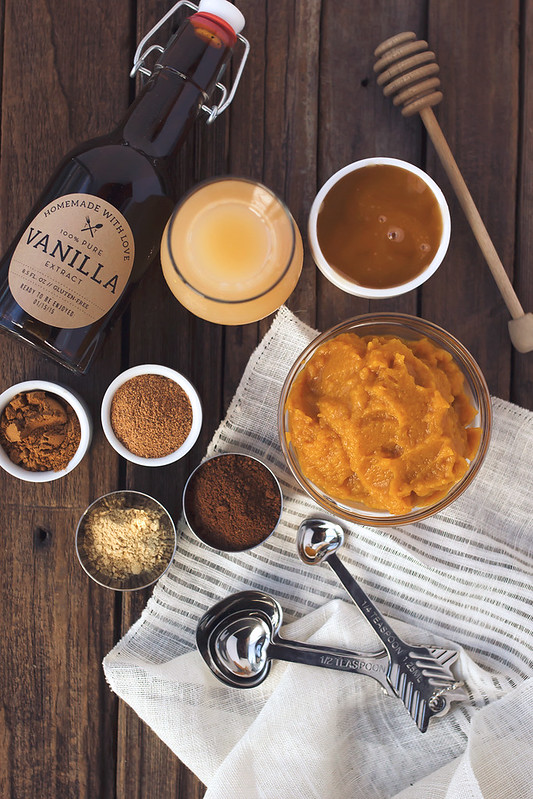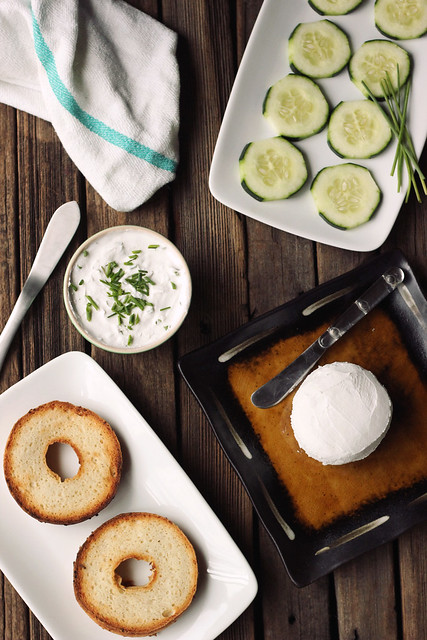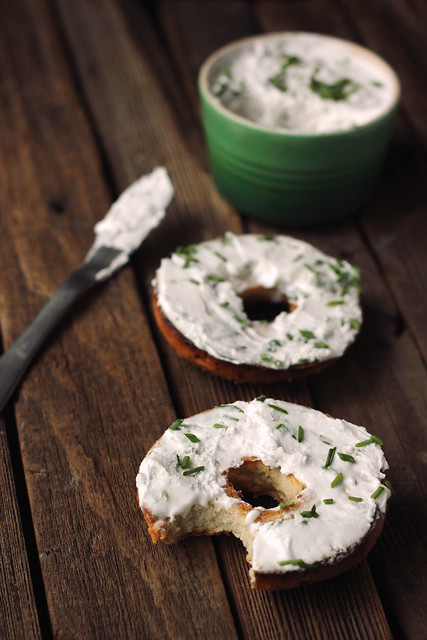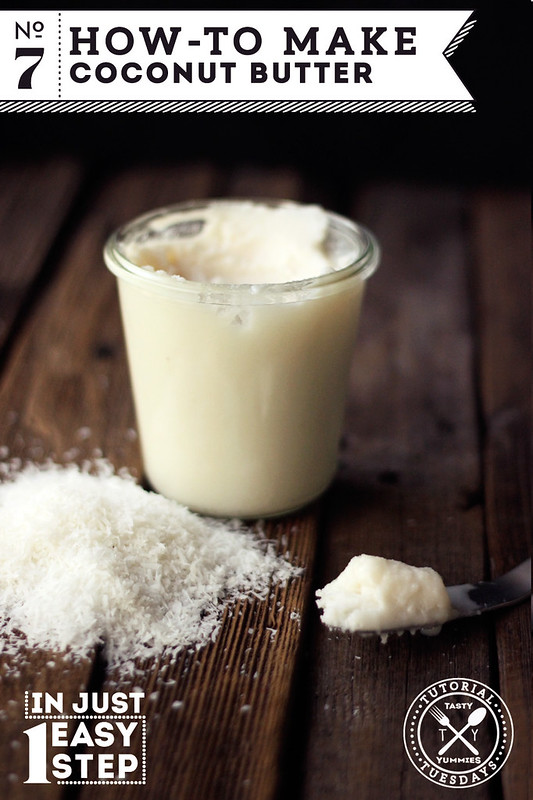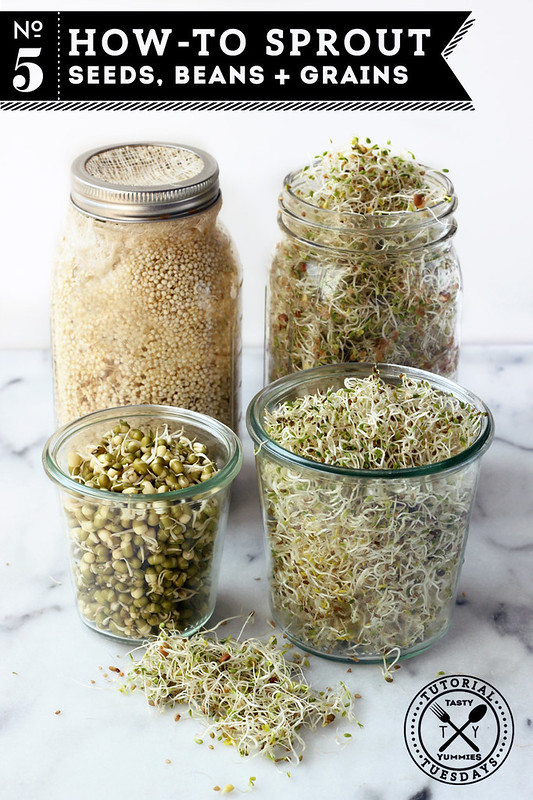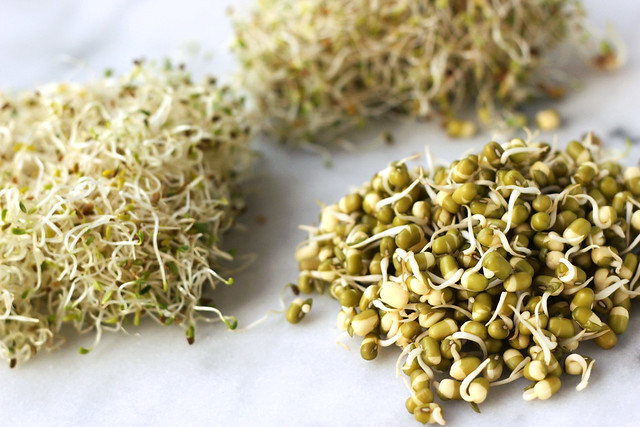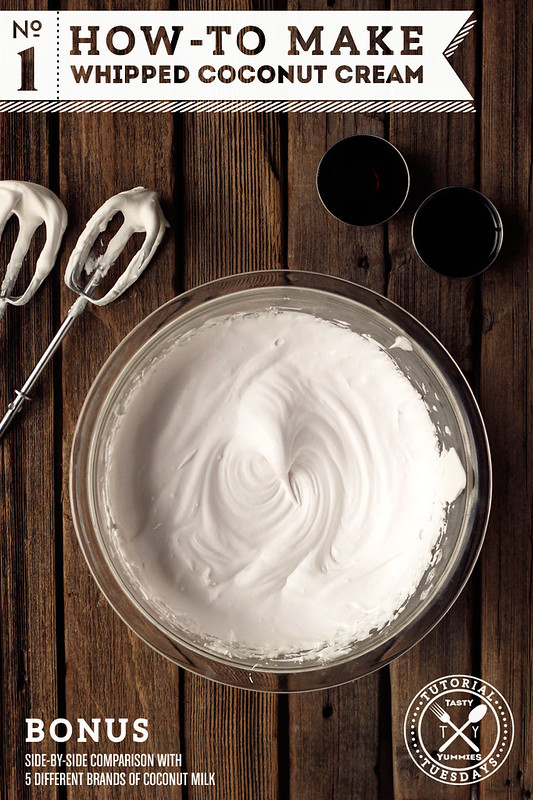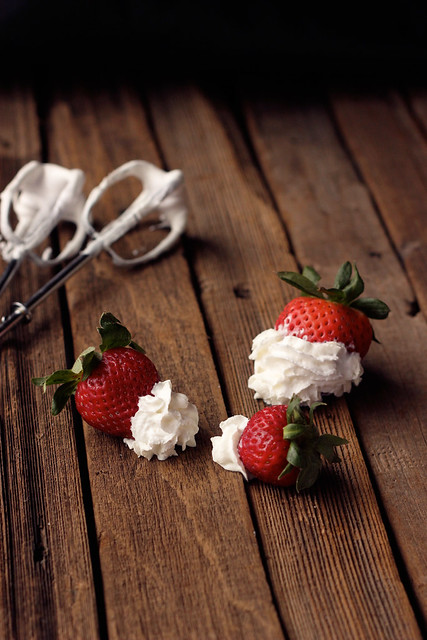-
How-to Make Sauerkraut {+ Video}
Sauerkraut and all it’s live culture, raw, funky smelling goodness, it’s been a favorite of mine for sometime. But, it wasn’t until this past year, while taking on the arduous task of healing my gut, that I have truly learned to love and appreciate this stuff for all of it’s magical healing qualities. I have shared this simple tutorial at workshops, including retreats I have hosted and cooking demos. It’s a very simple process, a food that has been around for thousands of years that produces incredible, tasty and healing results. While not very cumbersome at all, sauerkraut is a timely process, but I can tell you that patience is very much a virtue in this game. It’s worth the wait. For those new to sauerkraut, I do recommend starting out consuming a very small amount, a tablespoon or two, used as a condiment of sorts. As with any fermented or probiotic rich food, too much too soon, even when it’s good bacteria, can have some gnarly affects on your gut. More isn’t always better. Take it slow.
This tutorial offers the step by steps on making small batch sauerkraut, in a glass mason jar. To make a larger batch in a fermentation crock, you can just double or triple the recipe, as necessary.
All You Need:
1 or 2 quart wide mouth glass canning jar or 3 pint size glass jars, with tight fitting lid(s)
1 medium head organic cabbage
1 tablespoon sea salt
additional spices, vegetables or fruit you wish to add
glass mixing bowl
sharp knife and cutting board (or food processor with shredding plate)
HOW IT WORKS:Letting the cabbage ferment at room temperature invites beneficial bacteria to grow via lacto-fermentation. These microorganisms feed on sugars in the vegetables and raise levels of lactic acid, giving fermented foods their tang while also preserving them. Most commercial sauerkraut is required by the FDA to be pasteurized—which effectively destroys all the bacteria in it, including the beneficial bacteria— so making your own sauerkraut at home is definitely a better choice to improve your digestive health.
-
How-to Make French Vanilla Coffee Creamer (Dairy and Non-Dairy)
Since I have begun seeing clients as a Nutritional Therapy Practitioner, I am so grateful for my longstanding experiences with and my love for food. I am constantly asked the question “If I shouldn’t eat this, then what can I have, instead?”. I love having answers to this question.
I firmly believe that changing diet and lifestyle has to come from a place of both education and confidence. If I meet with a new client and tell them to stop drinking several Cokes daily, but don’t explain why, I can’t really expect them to want to make this change. Why would they? They are both chemically and emotionally attached and possibly even addicted. If I can take the time to explain the effects that the high levels of sugar are doing to their insulin resistance, if I can talk through the reasons why high fructose corn syrup is terrifying and explain the affects this one drink can have on their blood sugar, digestion, mineral absorption and so on, I have a much better chance of getting them on board for the long haul.
-
How-to Make Quick Pickled Veggies
With the end of summer not too far off, it’s time we start planning our graceful exit strategy, for me this usually includes preserving as much of the summer flavors as possible. Besides preserving fresh herbs in olive oil, I find quick pickled veggies to be an excellent way to hang on to the tasty abundance of summer, just a little bit longer.
Sure, canning, fermentation and other more long-term storage options are always available, but this is a super quick method, that you can throw together in a mere 15 or 20 minutes. No mess and no fuss.
-
How-to Make Salad Dressing
“The usual proportion of vinegar to oil is one to three, but you should establish your own relationship.”
Julia Child, Mastering the Art of French CookingA well-crafted dressing or vinaigrette is a thing of profound beauty. Delicate, yet prominent, understated while still making a statement. To me, the finesse found in the subtleties of a good dressing says a lot about someone’s skills in the kitchen and on that same note, it is one of THE most simple tasks to master. Ready in under 5 minutes, homemade dressings and vinaigrettes are one of the best ways to start the process of ditching store-bought, processed foods – making it a very budget and health conscious option.
Since they only really require three main ingredients, base (oil), acid and seasonings, you can pretty much make any flavor profile you can think of, with any combination of ingredients available in your kitchen. From here, knowing this simple formula and the any options, you can get creative, adjust to your preferences and you can come up with an unlimited supply of varying staple dressings.
-
How-to Make Beet Kvass // A Cleansing Medicinal Tonic
How-to Make Beet Kvass // A Cleansing Medicinal Tonic
Part of my journey towards healing my body has been transitioning myself from the standard approach to food consumption that we have all grown up with, eating whatever is served to you or whatever was around and seems right or easy – to instead being able to fully tap into my innate sense of knowing what my body truly needs in the moment and nourishing it in a much more mindful way. Most effective has been the practice slowing down and quieting my mind enough to access this intuition, not just while preparing and actually eating my food, but also harnessing this skill away from meal time – in my yoga and meditation practices. It is in these moments that I truly give myself the space the fully listen to my body and trust that deep down I know what is right.
While this may to you, sound like the beginnings of a meditation series rather than a recipe tutorial, your instincts are not actually far off. For me, this ability to tap into my intuition first came by way of my yoga practice, then it was further developed in my meditation practice and now I find myself opening the fridge and not rummaging through for what I am craving and what sounds good, but rather quieting the chatter of my mind enough to really access the place where my body can communicate to me what it needs. I think in this busy and hectic world we have lost touch with this incredible primal ability to be so in tune with our body and it’s needs and I fear that we are missing out on the opportunity to truly nourish ourselves in a far more effective and meaningful way. Both in the food we eat, but also in the life that we choose to lead.
Recently I was at a new moon sound healing journey, hosted by my friend Brook. As I always do, every few weeks, I showed up for myself. To give myself the much needed time and space for self care, but to also honor my healing path, my guides, and most importantly to set an intention. In my most recent journey, a few weeks back, as we lie there drinking in the healing vibes of the beautiful sound, I found myself receiving messages about what I needed more of, what I should be following and the places that my energy would be best spent. It was powerful, moving and truthfully, it was a little scary (maybe scarier is actually typing it up and sharing it with the world, though).
While much of the messages pertained to my work with others and the new paths I am exploring in my work and as a healer, I also heard, very clearly, certain personal needs that I should explore. To receive very clear messages while meditating isn’t something new to me, but to be told what to do very loudly and very specifically in this manner, this was a first. Without boring you with of the details I will just share the part of that journey that inspired this post. The word beet and images of beets continuously appeared throughout the session. While so much was zipping past me, so many ideas, so many words and images, suddenly rising above the rest, very loudly and clearly I heard: “You need more beets” “Try a beet tonic”. I instantly was reminded of Beet Kvass, something I have tried before, but never actually made for myself.
What is Beet Kvass
Beet Kvass is a healing and cleansing medicinal tonic. A traditional probiotic drink, popular in Eastern Europe, Ukraine and Russia, it is the result of fermentation by friendly Lactobacillus bacteria, which gives it a briny, tangy flavor. Beet kvass has a very interesting flavor combination, that is certainly an acquired taste. A little more intense than the kombucha or sauerkraut we’ve all come to know, it’s earthy, salty, sour, a little sweet and it has that elusive umami flavor – sometimes it’s even a little fizzy.
Benefits of Beet Kvass:
- Rich in Probiotics
- Dense in Valuable Nutrients
- Excellent Liver Cleanser
- Beneficial Blood Tonic that Balances the pH of the Blood
- Reduces the Risk of Cancer from it’s Various Antioxidant and Anti-inflammatory Properties
Created through lacto-fermentation, this nutrient-dense stimulating tonic is loaded with friendly probiotic bacteria and beneficial enzymes, great for intestinal health, aiding in digestion and elimination, it’s an excellent liver cleanser and along with the healthy probiotics, beet’s high levels of vitamin C make this tonic an excellent boost for the immune system. It’s also more hydrating than water, containing a collection of minerals necessary to electrolyte balance in the body. Beets also contain phytonutrients called betalains that are found in the pigment of beets and are what causes your hands to stain. These betalains help create red blood cells, making beet kvass an excellent blood tonic for alkalizing the blood. Beet kvass and beets also help to naturally cleanse the gallbladder, improve bile flow, remove plenty of toxins and promote regularity!
Beet kvass can be drank as a tonic, straight up, it can be used in place of vinegar in cooking or in salad dressings, it’s also a great addition to soup and you can even use it in cocktail, the way you would a vinegar shrub.
From Sally Fallon in Nourishing Traditions (page 610):
This drink is valuable for it’s medicinal qualities and as a digestive aid. Beets are just loaded with nutrients. One 4-ounce glass, morning and night, is an excellent blood tonic, promotes regularity, aid digestion, alkalizes the blood, cleanses the liver and is good treatment for kidney stones and other ailments.
-
How-to Make Ghee at Home
Ghee is a kitchen staple around here. For the longest time I was buying it, and I still do in a pinch, but as I discovered the cost efficiency and simplicity of making it at home, I have made this part of my DIY repertoire.
For those unfamiliar, ghee is a clarified butter, of sorts, that has been cooked down for some time, removing any moisture, milk solids and impurities. What remains is a pure and delicious butter oil, that has turned a beautiful golden color, it’s taste and flavor are slightly sweet and nutty. Ghee brings an aroma, taste and flavor a lot like butter, but even better. The difference between clarified butter and ghee is ghee’s lengthier cooking process, to remove all the moisture and the milk solids are browned in the fat and then strained out, bringing the slightly nutty taste. Ghee has a longer shelf life, due to all the moisture being removed.
Ghee is a wonderful option for those who are lactose or casein intolerant and want to enjoy the taste of butter. Ghee is also clearly a much better option than those scary hydrogenated oil-filled margarines and other highly processed vegan spreads. It does not burn, unless heated excessively, so it’s a wonderful option for stir fries, sautéing, frying, roasting, sauces, ettc. It’s also delicious as a spread, on toast, pancakes, scones, over rice and more. It can also be used on the body, as an oil for massage, as a base for healing herbal treatments, for burns, skin rashes, etc.

In India, ghee is a sacred and celebrated symbol of nourishment and healing, especially in daily rituals. It is also used in every day cooking. Ayurvedic physicians celebrate this liquid gold as being important to health and well-being, balance and vitality. If you don’t wish to make your own, ghee is usually found in the ethnic section of any big grocery store, in most Indian/South Asian stores or online.
Always make ghee with high-quality grass-fed organic butter. Cheap butter contains a lot of water and chemicals and it tends to burn faster. Due to the reduction and straining process, always start with 25% more butter than the amount of clarified butter desired. 1 pound of butter = approximately 1 1/2 cups ghee.
The Benefits of Choosing Ghee:
Rich Butter Taste without the Lactose or Casein. Made from butter ghee has the buttery flavor, but the milk solids have been removed, so if you are lactose or casein free, enjoy without issue.
Ghee has a high smoke point. 485ºF. You can cook and fry with ghee and it will not burn nor will it break down into free radicals, like so many other cooking oils can.
Ghee doesn’t spoil easily. Without the presence of milk fat and water, this makes ghee shelf stable. If you desire, it can be stored at room temperature rather then refrigeration. Ghee will last a couple months in an air-tight container at room temperature. If you aren’t sure if any moisture or milk solids remain, you can certainly play it safe and store in the fridge, to maximize it’s shelf life. That’s generally what I do.
Ghee is rich in fat soluable vitamins A D and E. If you have gluten sensitivity, leaky gut, IBS, Crohn’s or certain pancreatic disorders, you may have a problem absorbing vitamin A. By using ghee for cooking, and as a replacement for butter, you can increase your intake. Vitamin D can be made in the body, after exposure to sunlight, but obviously in the colder winter months is can be challenging for us to make enough. Ghee benefits the body by improving moisture and contains vitamin E, which is an antioxidant whose role is to repair damaged skin, balance hormones, improve vision and help to balance cholesterol. Fat-soluble vitamins are absorbed with fat and stored in the gastrointestinal tract — and they are essential to maintaining a healthy metabolism and various biochemical functions in the body. (1)
Ghee is also rich is K2 and Conjugated Linoleum Acid. Studies show K2 is better for building bones than calcium and proper levels of K2 can help fight tooth decay, bone loss and aid in the fight against the calcification of arteries. CJA is antioxidant with anti-viral properties, when sourced from grass-fed cows. Studies indicate that it may help to reduce tumors, lower cholesterol and high blood pressure, reduce inflammation, and actually lower body fat.(2)
Like coconut oil, ghee is rich is medium chain fatty acids, which are quickly absorbed directly to the liver and used as energy. This quick burn can actually lead to weight loss.
Ghee and butter are rich in butyric acid, a short chain fatty acid great for protection against fungal infections and aids in colon health. It’s been shown to support healthy insulin levels, is an anti-inflammatory, and may be helpful for individuals suffering from IBS, Crohn’s disease and ulcerative colitis. (3)
Ghee Reduces Inflammation. Ghee’s levels of butyrate play a role in reducing inflammation in the digestive tract and throughout the body. In Ayurvedic practice, ghee benefits the body by creating a more alkaline system that overall reduces inflammation by reducing the leukotriene secretion and reducing prostaglandin in the body(4)
-
How-to Make Elderberry Syrup
We aren’t out of the woods just yet, cold and flu season is very much still upon us! Rather than going into hiding, I suggest you arm yourself. Your first line of defense being a nutrient-dense, properly prepared whole foods diet, eliminating sugar and processed foods and of course, minimizing stress and maximizing your rest and relaxation time. That said, extra boosts to your immune system, also never hurt. Elderberry Syrup is an incredible, all-natural remedy that is high in immune-boosting compounds, research (and my own personal experiences) show that it is an effective therapy for shortening the duration of colds and flus.
I swear by this stuff, you guys! It works. I always have it on hand for the onset of symptoms, but I also take it as an immune boosting player as part of my maintenance plan during the cold and flu season and/or during high stress periods where my immune system may be more compromised. While I have loved elderberry for a long time, after attending an herbal medicine workshop here in Long Beach a few weeks ago, where we learned all about elder, I was inspired to share with you just how easy it is to make. I really enjoyed spending time learning all about elderberries, their healing properties, meditating with the plant, learning it’s history and sampling various preparations. Elderberry syrup is one of my favorite ways to receive the healing powers of elder, because of course, the sweetness from the honey is delicious and it really brings out the sweetness of the berries, but honey in it’s own right is also very healing and soothing.
Store-bought elderberry syrups can be quite expensive and often times they contain high-fructose corn syrup, some contain food dyes, preservatives, and so on. Making your own syrup means that you not only save some money, but you also can control every ingredient used and once you make this yourself at home, you will wonder why you have ever bought it.
Elderberries – What Are They?
Elderberries (family Caprifoliaceae) are large deciduous shrubs or small trees native mostly to the northern hemisphere, although they have become naturalized throughout much of the temperate and subtropical regions where humans live. Elderberries or Sambucus Nigra L., have long been used for centuries by indigenous cultures to treat wounds, respiratory illness, viruses and more. Elder may have anti-inflammatory, antiviral, and anticancer properties. The berries of the plant are often used for preserves, syrups and tinctures, while the bark and flowers are also useful for treating allergies, creating salves, toning the skin and more. The leaves, stems are toxic.
Besides lots of flavonoids and free radical-scouring antioxidants, elderberries contain 87 percent of the daily value in vitamin C, and high amounts of vitamin A, potassium, iron, vitamin B6, fiber, and betacarotene. {source}
Elderberries add a bright, tart, and delightful flavor to various foods, making it a great choice for sauces, syrups, dressings and they can also be used to make wine. I suggest buying high-quality organic dried elderberries, this is a great brand, I also recommend these and finally, this brand. You can also use dried elderberries to make a quick tea. 1 tablespoon of dried berries, to every 8 ounces of filtered water. Bring to a boil, them simmer for 15 minutes. Strain out the berries and enjoy.
Treatment and Prevention of Colds and Flu:
In a human clinical trial, a significant improvement of influenza symptoms, including fever, was seen in 93.3% of the cases in the elderberry-treated group within 2 days, whereas in the control group 91.7% of the patients showed an improvement within 6 days. (Zakay-Rones, 1995)
The beautiful, deep rich purple elderberries are rich in antioxidant flavanoids believed to stimulate the immune system, reduce swelling and fight inflammation. The benefits seem to be greatest when started within 24 to 48 hours after the symptoms begin. One study found that elderberry could cut the duration of flu symptoms by more than 50%. {source}
The anthocyanins present in elderberries are similar to those found in other deeply hued foods like blueberries, acai berries, raspberries, red cabbage, grapes, black rice and others. These antioxidants may neutralize free radical buildup, also known as oxidative stress. Free radicals are linked to the development of a number of degenerative diseases and conditions. Free radicals are by-products of normal bodily functions and are inevitable in daily life. However, it is the delicate balance of antioxidants and free radicals that determine our state of health. {source} One laboratory study demonstrated that the anthocyanins taken from elderberries helped protect blood vessels from free radical damage, suggesting it could also be beneficial against cardiovascular disease.
Experts think that elderberry reduces the path of flu simply by suppressing an enzyme known as neuraminidase, a proteins that enables flu to spread. Some studies also show that elderberry may have distinct ability to bind with viruses, halting their ability to mutate, change or multiply, thereby shortening the duration of illness or halting the virus before it’s effects are felt by the body.
The antiviral components of elderberry fruit extract were tested and found to effectively inhibit Human Influenza A (H1N1 virus) in vitro, possibly by blocking the ability of the virus to infect host cells. The extract was so effective, that researchers compared it with the prescription medications Amantadine and Oseltamivir (Tamiflu). {source}
-
How-to Make Chocolate Bark
Homemade holiday gifts are one of my very favorite things. I love thoughtful, personalized gifts that are truly made with love! Homemade chocolate bark is probably one of my most favorite edible homemade gifts to make. Whether it’s a gift for a hostess of a holiday party or your dish to share, homemade chocolate bark is super simple to make and you can customize it to no end.
The possibilities for flavors and toppings is endless and you can really create something super special for whoever will receive it. It is super easy to make your chocolate bark allergen friendly, too. Easy to make gluten-free, vegan, nut-free, soy-free and so on. You can add dried fruit, nuts, seeds, your favorite cookies or candy, dried botanicals, spices or herbs. Some of my personal favorite flavor combos include sea salt or smoked sea salt. I also love a sprinkle of cinnamon, chili powder or cayenne to bring a little heat. Gluten-free pretzels or mini peanut butter cups are both amazing and fun toppings. The list could go on and on.
-
How-to Make Crock Pot Pumpkin Butter
For all of the crazy detailed, tutorials I have shared here, with lots of steps and tons of testing on my part, I equally love super simple, one step DIYs, as well. This week I show you How-to Make Crock Pot Pumpkin Butter and it seriously couldn’t be any easier. Let’s first clear the air for those of you that don’t know… Pumpkin Butter has no butter in it. No dairy of any kind. Discuss. Seriously though, it’s just that it’s thick like butter I guess? I don’t know who came up with the name.
This super simple recipe requires very little of you. You literally dump the ingredients into your crock pot, stir, turn it on, let it cook. Done. I find the crock pot to be easier than the stove top and because it cooks low and slow, I like the flavor so much better. I do suggest still keeping an eye on the crock pot, since it can stick and you do not want scorched, burnt pumpkin butter, it won’t taste good that way. I personally recommend fresh pumpkin puree, which is stupid easy to make and provides the best flavor, but canned pumpkin will also work perfectly, I have made it both ways and they are both crazy delicious.
-
How-to Make Dairy-Free Cultured Cream Cheese
This tutorial series has been a really fun way for me to share with you guys some of my favorite DIYs and How-to’s. But, I have also really enjoyed the challenge of exploring and conquering things I have long been dreaming of. Last post it was the yogurt and this time it’s this cream cheese.
Since I have almost entirely cut dairy out of my life, cream cheese is one of those things I just haven’t been able to find a good substitute for. Most of the store bought alternatives are loaded with soy, preservatives, thickeners and other weird stuff. Not my scene at all. Once or twice a year I like to treat myself with some of the amazing gluten-free and vegan bagels from Rising Hearts Bakery in LA and I am so happy to now have an amazing homemade dairy-free cream cheese to enjoy with them.
-
How-to Make Coconut Butter
This is a super easy tutorial this week you guys, literally One Step. One ingredient.
How-to Make Coconut Butter.
What is Coconut Butter?
Coconut butter is basically just ground up coconut meat that has been processed until it is smooth and creamy. The same idea as nuts being used to make nut butter. Though it isn’t quite as creamy as a store bought creamy peanut butter and the texture can vary.
What is the Difference Between Coconut Butter and Coconut Oil or Coconut Cream?
Coconut butter includes the meat of the coconut and coconut oil does not. Coconut oil is used more as typical oil is, when cooking or baking, where coconut butter is more of a spread or dip, it could also be used in baking as nut butters would be.
Additionally, coconut butter is different from coconut cream which contains water. Coconut cream involves cooking down as much as 4 parts coconut to 1 part water, then straining out the coconut. Coconut cream is also what is found at the top of a can of full fat coconut milk. Coconut cream contains less water then coconut milk but coconut butter contains no water at all and there is no straining involved, the meat is left in.
How-to Make Coconut Butter:
Start with a quality brand of unsweetened organic shredded dehydrated coconut. Unsweetened coconut flakes will also work. Not fresh, not low fat, not sweetened, not toasted. Just regular ‘ol unsweetened flaked or shredded coconut. Use somewhere between 2 cups and 4 cups of shredded coconut, depending on the size of your food processor or high speed processor blender. 4 cups of shredded coconut will make about 1 cup of coconut butter. I find in my 14-cup food processor, that using 3 or 4 cups of coconut works much better than just 2 cups.
-
How-to Sprout: Seeds, Beans + Grains
Much like making homemade almond milk, which I have done for years now, preparing sprouts at home, has now become a weekly thing for me. I absolutely adore sprouted foods and all of their many benefits. But, I have to be honest when I tell you the sprouts they sell at the store creep me out, a bit. Knowing just how short their shelf life is, it makes it hard for me to believe they are fresh and that their exposure to harmful bacteria has been limited. I would much prefer to make my own at home, where I know how fresh they are and exactly how they were handled. I started doing this late last year and I have become obsessed.
Sprouting is a way of creating “living plants”, loaded with nutrients and vitamins such as Vitamin C, B E and carotene. Some believe sprouted foods contain up to 15 times as many nutrients as their unsprouted counterparts. Sprouting also helps the absorption of minerals due to their ability to be better digested. Some people refer to sprouted foods as “pre-digested”, for this reason.
Sprouting takes time, but it’s much more of a waiting game, it doesn’t require a ton of work. Sprouted foods simply requires you to have patience and to be paying attention, tracking their sprouting time and making sure to tend to them, when needed. That’s about it.
Why Sprout?
As we discussed in both the nut butter and nut milk posts – many nuts, seeds, legumes and grains contain natural chemicals that protect them while growing, both from sprouting prematurely and also from predators. These protectors also act as enzyme inhibitors to us, meaning we get much less of the crucial nutrients from these foods than we should be. Plus, this “armor”, of sorts, makes digesting them much more difficult. Soaking these foods releases these chemicals, helping you to absorb your food’s essential minerals and nutrients. Additionally, by soaking the nuts with the removal of these nutritional inhibitors and toxic substances, the flavor and taste is much more ideal and appealing.(read more in depth about these chemicals and why we soak, here)
So, we are back to the soaking idea again. Soaking is not only necessary for sprouting to occur, but we are also unlocking the full nutritional potential of these foods, as we did with the nut butters and nut milks. After soaking, when that natural protective armor has been removed, the sprouting process can then occur. So basically, if soaking is the first step of increasing the nutritional benefits of these foods, then sprouting is the incredible finishing move to creating the perfect nutritional superfood out of something that would otherwise leave us feeling bloated and tired, due to the strain they would typically put on our digestion.
Sprouted foods, also known as “activated foods” are incredibly nutrient dense foods, they encourage production of healthy bacteria that aids in our digestion and in turn, boosts our immunity. Sprouts are great on salads, on top of soups or stews, in stir fries, inside of wraps or sandwiches, in smoothies – really they are great in any dish that you want to add a nutritional boost to.
What Can you Sprout?
Most seeds, legumes, grains and some nuts will sprout, but be aware some will not. Because many nuts you find in the stores have been pasteurized or treated with heat in some way, they aren’t technically raw and although soaking can activate and allow us access to their nutrients, sprouting likely won’t happen. Oftentimes, when I am simply looking for traditional sprouts, I will buy premixed ready to sprout blends of organic seeds and legumes exclusively meant for sprouting. It gives me a nice wide variety and I know that, since everything in the blend is meant for sprouting, it will do just that. See the bottom of this post for pre-made sprouting blends that I recommend. For the step-by-step photos, I used this organic blend, Spicy Salad Mix, which contains lentils, alfalfa, red clover, radish and black mustard seeds.
Once sprouted, you can also cook grains and legumes, as you normally would. Sprouted quinoa cooked in place of regular quinoa, is one of my favorite things as are sprouted lentils. Once sprouted, grains and legumes not only cook quicker than their dried counterparts, but they are, as you now know, much easier to digest and taste much better, as well.
Read the rest of this entry »
-
How-to Make Whipped Coconut Cream
Over the past few years, whipped coconut cream has become one of my favorite tricks I’ve come up with in the kitchen. I love whipping up (literally) a batch for dinner guests, not even bothering to tell them it isn’t heavy whipped cream. I love how amazed people are when I tell them that it’s totally vegan and just 3 simple ingredients. I have shared how to make this glorious stuff within several of my recipe posts before, but I thought what better way to kick off my new Tutorial Tuesdays series than with this favorite how-to!
Plus, since canned coconut milks can vary drastically, I wanted to give you my comparison of 5 different coconut milk brands. You’ll be shocked at how different each one is. Because of the vary degrees of whipability (is that a word?) – the results and the work can be quite challenging if you choose incorrrectly. Due to the different stabilizers in each brand and sometimes even where the coconuts originate from, these can cause the much needed separation of the coconut cream from the water to just not work – no matter what you do.
Outside of the varying brands, I have also read that extra air in the can, may also cause less separation to occur. This isn’t something I have tested too much myself, but if you want to shake cans of coconut milk at the store, I say go for it. You are listening for little to no swishing around of the liquid in the can.
Whipped coconut milk is creamy, rich and thick, much like traditional whipped cream and the coconut flavor is very faintly there. Not nearly what you would expect it to be. The best part about homemade whipped coconut cream is all of it’s many uses and how much you can vary the flavor. You can add raw cacao powder for a chocolate cream, muddle some fruit and fold that in, maybe a squeeze or two of your favorite citrus, or even just a good quality all natural extract, you can even add a bit of your favorite liqueur. It would be hard to choose my favorite way to customize my homemade whipped coconut cream, but the easy part is actually making it. So, let’s get to it. Read the rest of this entry »

